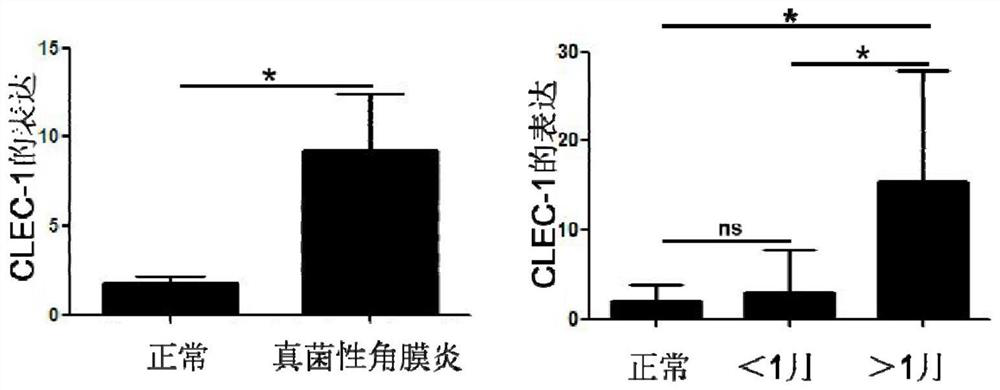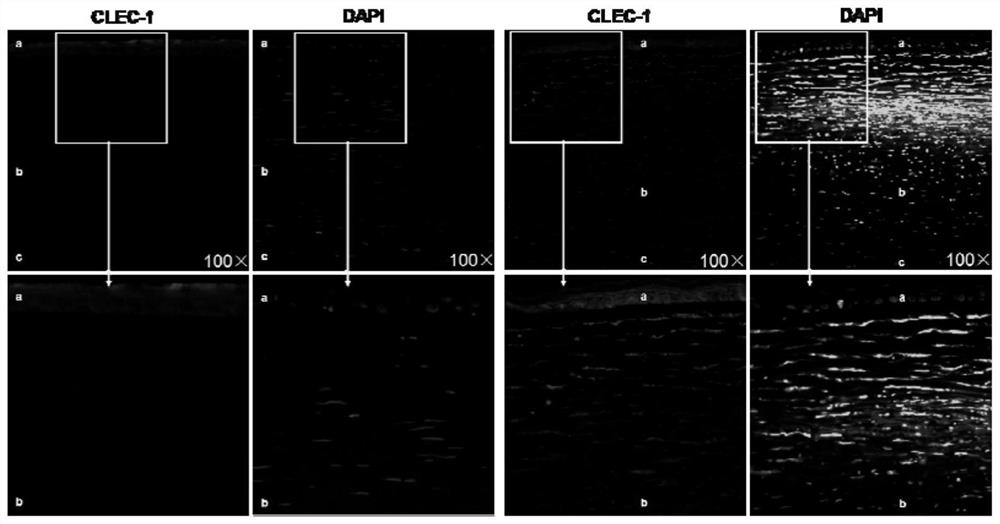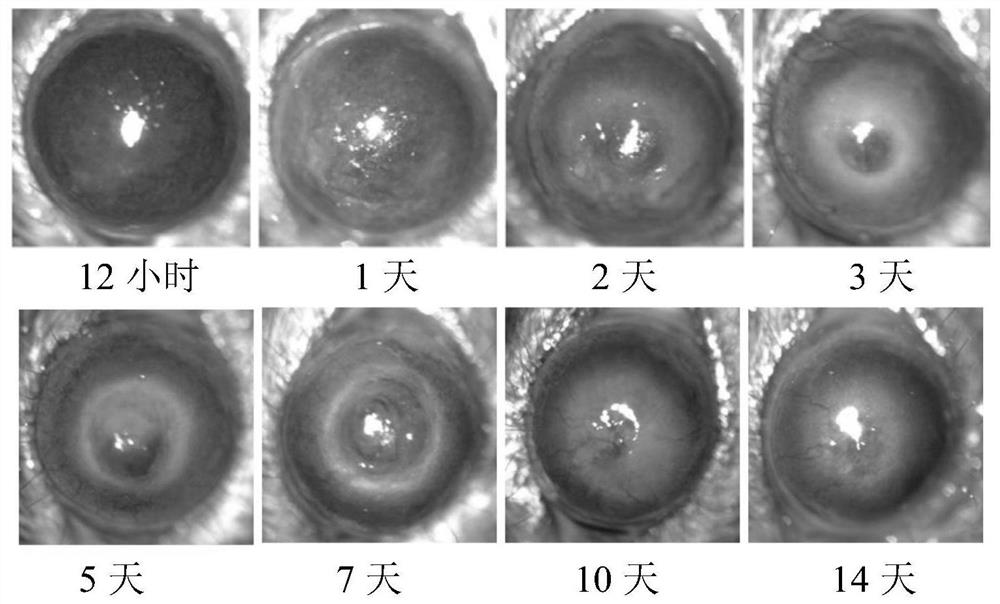Application of C-type lectin-like receptor-1 as therapeutic marker of fungal keratitis
A fungal keratitis, lectin technology, applied in biological testing, biomaterial analysis, disease diagnosis, etc., can solve the problems of difficult to restore transparency of the cornea, visual impairment of patients, and corneal tissue damage.
- Summary
- Abstract
- Description
- Claims
- Application Information
AI Technical Summary
Problems solved by technology
Method used
Image
Examples
Embodiment 1
[0053] Example 1 The expression of CLEC-1 is increased in the cornea of patients with Aspergillus fumigatus keratitis
[0054] 1. Experimental materials
[0055] 1.1 Collection of human corneal specimens
[0056] The corneas of 6 patients with Aspergillus fumigatus keratitis and 6 healthy patients were collected, and the specimens were confirmed by fungal culture and morphology. The purpose and methods of the study were explained to the patients in detail, and after informed consent was obtained, the samples were collected. Patients with any form of immunosuppression or topical steroid therapy or acute or chronic systemic disease were excluded.
[0057] 1.2 Experimental fungi
[0058] 3.0772 strains of Aspergillus fumigatus (China General Microorganism Culture Collection and Management Center)
[0059] 2. Experimental method
[0060] The corneas of 6 patients with Aspergillus fumigatitis and 6 healthy patients were collected for immunofluorescence and qRT-PCR detection....
Embodiment 2
[0064] Example 2 The expression of CLEC-1 decreased in the acute inflammatory phase of Aspergillus fumigatitis and increased in the recovery phase
[0065] 1. Experimental materials
[0066] 1.1 Experimental animals
[0067] C57BL / 6 mice (purchased from Jinan Pengyue Laboratory Animal Breeding Co., Ltd.)
[0068] 1.2 Experimental fungi
[0069] 3.0772 strains of Aspergillus fumigatus (China General Microorganism Culture Collection and Management Center)
[0070] 2. Experimental method
[0071] 2.1 Fungal Preparation
[0072] The Aspergillus fumigatus strain was inoculated on Sabouraud's medium, and cultured in a constant temperature incubator at 37°C for 2-3 days. The hyphae and conidia were scraped and put into 5ml sterile PBS to form a mixed solution, and the hyphae were removed by filtration with sterile gauze. Centrifuge at 4500 rpm at 4°C for 10 minutes, discard the supernatant, add 5 ml of bacterial PBS to the pellet to resuspend to form a conidia suspension. Adju...
Embodiment 3
[0087] Example 3 CLEC-1 overexpression reduces inflammatory response
[0088] 1. Experimental materials
[0089] 1.1 Experimental supplies
[0090] CLEC-1 adenovirus (AAV) vector (Genechem)
[0091] CLEC-1 lentiviral vector (Genechem)
[0092] 1.2 Experimental cells
[0093] THP-1 macrophages (Wuhan, China)
[0094] 1.3 Experimental fungi
[0095] 3.0772 strains of Aspergillus fumigatus (China General Microorganism Culture Collection and Management Center)
[0096] 2. Experimental method
[0097] 2.1 In vivo experiments
[0098] One eye from each mouse was randomly selected for subconjunctival injection (5 μl) of 1011 vg AAV vector. Two weeks later, enhanced green fluorescent protein (EGFP) was detected with a fluorescence stereo microscope to determine the uniform distribution of the virus in the corneal stroma. The overexpression of CLEC-1 was detected by qRT-PCR and western blot. Corneas were harvested 1 day after infection for MPO detection, immunofluorescence st...
PUM
 Login to View More
Login to View More Abstract
Description
Claims
Application Information
 Login to View More
Login to View More - R&D
- Intellectual Property
- Life Sciences
- Materials
- Tech Scout
- Unparalleled Data Quality
- Higher Quality Content
- 60% Fewer Hallucinations
Browse by: Latest US Patents, China's latest patents, Technical Efficacy Thesaurus, Application Domain, Technology Topic, Popular Technical Reports.
© 2025 PatSnap. All rights reserved.Legal|Privacy policy|Modern Slavery Act Transparency Statement|Sitemap|About US| Contact US: help@patsnap.com



